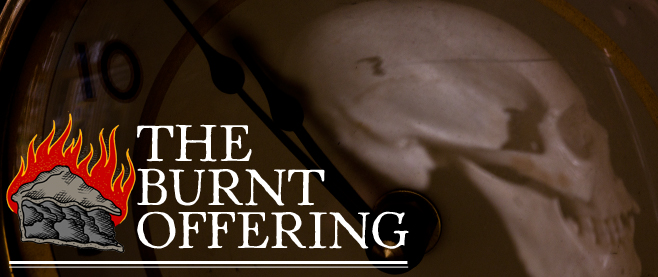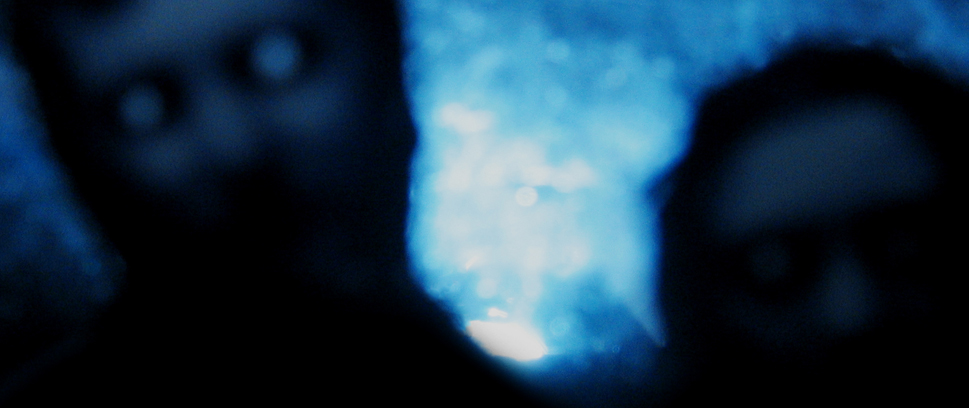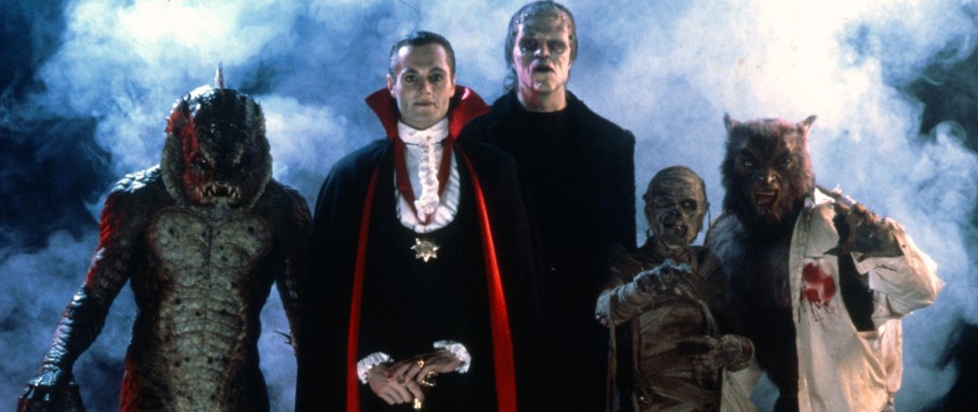
Life in the Monster Squad
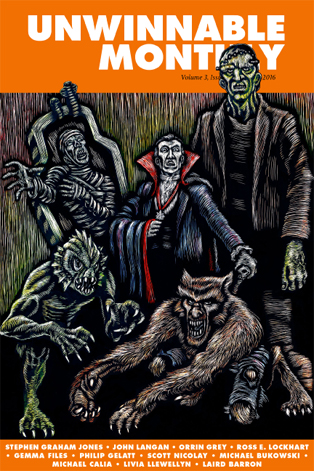 This essay is a reprint from Unwinnable Monthly #84, the Monsters issue. If you like what you see, grab the magazine for less than ten dollars, or subscribe and get all future magazines for half price.
This essay is a reprint from Unwinnable Monthly #84, the Monsters issue. If you like what you see, grab the magazine for less than ten dollars, or subscribe and get all future magazines for half price.
———
In one of my earliest memories, I am sitting on a bale of hay in a darkened barn, looking at monsters.
The year was 1988 or ‘89 (I’ve never been able to figure out which) and it was Halloween. In those days, I lived in a tiny southern Kansas town called Sedan: the birthplace of famous circus clown Emmett Kelly, county seat and largest population center of Chautauqua County. Today, Sedan’s population sits at around a thousand souls. In that year, the entire county had a population of only around four thousand.
We lived on the edge of town, just down the street from the county fairgrounds. Every Halloween, the 4H Club put on a haunted house in the cattle pens there, tacking up sheets of black plastic to form a labyrinth through which screaming kids groped blindly while volunteers in rubber werewolf masks leapt out, brandishing chainsaws with the chains removed. My first experience with a Halloween haunted house was in those cattle pens, the beginning of an addiction that I would carry with me to this day.
But not that year. That year I sat in the dark on a bale of hay in a long, low 4H barn and watched a projector throw the lighted image of the 1987 Shane Black/Fred Dekker film The Monster Squad up onto the wall. I’ve seen the movie many times in the years since, so it’s hard to say what that first experience was really like. Was I scared? I’d already seen plenty of much scarier movies by that tender age, so probably not. I know that I was in love, and I keenly remember that walk home from the fairgrounds, down the long, barely-lighted streets on the edge of town, the night suddenly electric around me.
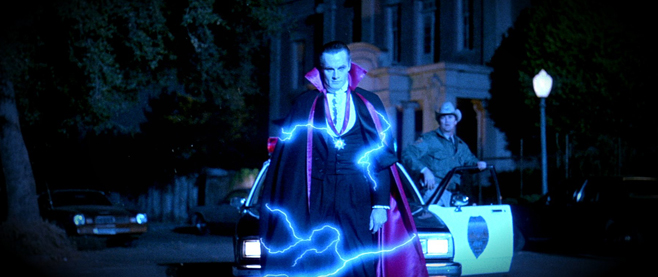
When it comes to truly formative influences, it’s always difficult to imagine how differently life would have turned out without them. They come upon us while our molten surface is still cooling, and they change forever the shape that we will ultimately assume. Did I already love monsters and scary stories before I ever saw The Monster Squad? Absolutely. Would I have grown into the person and the writer that I am without that Halloween night in the 4H barn? That’s much tougher to say . . .
I was born in 1981, too late to be a true Monster Kid. By the time I was around, most of the horror hosts were off the air and we didn’t have cable or a satellite dish, so the handful of TV channels that we did get didn’t show classic fare like the Universal monster movies, Hammer’s Gothic chillers, the big bug movies of the 50s or the schlocky shockers of William Castle. When I got monster movies at all, it was stuff like Squirm and C.H.U.D. and The Food of the Gods.
So Monster Squad became my gateway to those old Universal monster movies, those classic monsters. Years later, my older brother would record a showing of Monster Squad off HBO onto a VHS tape along with two other movies – Aliens was one of them, if memory serves, Creepshow may have been the other – and I watched it until the wheels fell off. Until I could reliably quote the film in its entirety and could probably have accurately reproduced it from memory. If Ray Bradbury’s Fahrenheit 451 future had come to pass and had included movies, I could have been the kid who safeguarded The Monster Squad for future generations.
In so many ways, Monster Squad was tailor-made for me. Here were kids who thought and acted and talked like the kids I knew; who cussed and were obsessed with monsters and speculated about the things that movies would never show us. I recognized myself in these kids. I even owned the exact same knock-off Godzilla toy that sat on Eugene’s desk. More than that, though I didn’t fully understand it at the time, I recognized myself in these filmmakers. I saw that there were other people who thought and felt the way I did. Not just in terms of loving monsters, but in the ways that I saw connections between them, layers in stories laid down by the sediments of preceding narratives.
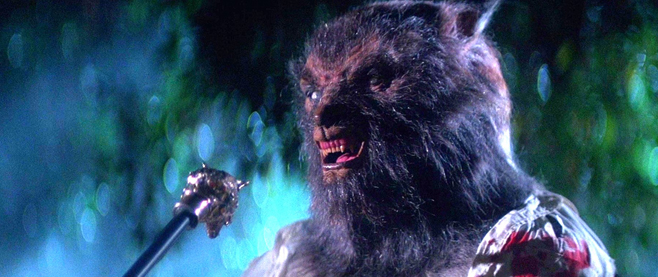
Here was a jokey, self-referential horror movie years before Scream or even Wes Craven’s New Nightmare – and it treated the monsters with seriousness even while it made a joke out of most everything else. Here was a movie completely mired in the 80s, yet with an absolute reverence of the past.
I didn’t actually see any of the original Universal monster movies until I was in college. Before then, the closest I came were those Crestwood House monster books, with their orange and purple covers, filled with evocative black-and-white stills from movies that I had never seen, but that I could imagine with such vivid clarity.
Maybe it was thanks to those books that I realized, even as a kid, how much of Monster Squad nods to its predecessors. The armadillos standing in for rats in Dracula’s crypt, the old dark house in the swamp, Drac himself going by the anagram Alucard, his wolf-head cane a reference to the walking stick that kills poor Lon Chaney Jr. in the original Wolf Man. (Was that also, I always wondered, a part of the whole “only one way to kill a werewolf” joke?)
At the same time, what I didn’t realize as a kid was how carefully the filmmakers had to skirt around the actual Universal monsters. Universal didn’t originally release Monster Squad; Tristar did. This meant that Stan Winston’s (incredible) monster effects had to walk the tightrope of evoking the original monsters perfectly, while never actually stepping across the line of copyright infringement.
The more I learn about what goes on behind the scenes of the movies that I love, the more I come to think that “movie magic” actually means, “We couldn’t do it the way that we originally wanted to, so we had to come up with something else, instead.” In this case, the reimagining of the Universal monsters led to something better than if they had been able to use their actual likenesses, creating interpretations that are instantly familiar, while also every bit as striking as their more famous counterparts originally were.

Because I came to Monster Squad first, its versions of the creatures informed my personal image of each monster. I’ve argued before that no one iteration of a story or character makes it truly iconic, that it is the repetition of tales with minor (or major) alterations that creates a kind of gestalt entity that is Dracula or the Frankenstein’s monster in our collective imaginations. For me, that gestalt entity, for each of these classic monsters, began with Monster Squad. Duncan Regehr’s menacing and commanding turn as Count Dracula, which Wizard magazine once controversially called the greatest cinematic Dracula of all time. (I might not disagree with them.) Tom Noonan’s gentle, melancholy version of Frankenstein’s monster. The only gill-man suit that could ever possibly compete with the original.
Another thing that I didn’t understand as a kid was the tradition in which Monster Squad was operating. Back then, I never questioned the idea that Dracula, Frankenstein’s monster, the mummy, the wolf man and the Creature from the Black Lagoon would all coexist in the same world, the very real world that we all inhabit. Of course they would! I was unaware that, decades before Marvel would dominate the box office by creating a shared cinematic universe populated by all of their various comic book superheroes – inspiring pretty much every other movie studio to attempt to recreate the phenomenon – Universal Studios had already done the same thing with their monsters.
Beginning with Frankenstein Meets the Wolf Man in 1943, Universal attempted a string of what came to be called “monster mash” films, in which their various monster franchises crossed paths. They followed up Frankenstein Meets the Wolf Man with House of Frankenstein and House of Dracula in quick succession. Comedy duo Abbott and Costello even got in on the act, starting with Abbott and Costello Meet Frankenstein in 1948, and going on to meet Boris Karloff, the Invisible Man, Dr. Jekyll, Mr. Hyde and the Mummy.
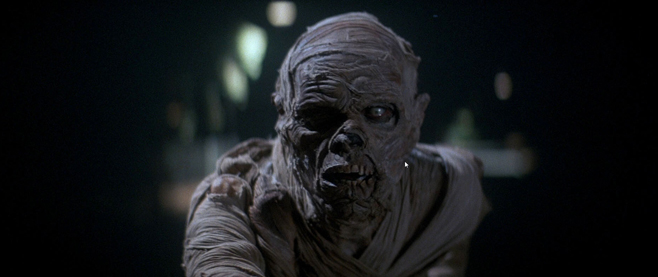
Universal would try the same trick again after the success of their 1999 remake of The Mummy, by putting that film’s director in charge of the 2004 creative and financial failure Van Helsing, which mashed up Dracula, the Frankenstein monster, a hunchbacked assistant, werewolves and even a brief appearance by Mr. Hyde.
There are even plans now for another attempt to climb aboard the “shared universe” train that they seemingly created way back when, with a series of interlocking monster movies on the drawing board, slated to follow yet another remake of The Mummy, out next year and starring Tom Cruise (sadly not as the mummy). Even so, it seems unlikely that they will ever manage to capture the lightning in a bottle that was The Monster Squad.
These days, I probably couldn’t quote quite all of Monster Squad from memory, and I may have developed a greater appreciation for Dekker’s previous directorial debut, Night of the Creeps, but Monster Squad still holds a special place in my cinematic pantheon and I doubt if that Halloween memory of the darkened barn and the larger-than-life monsters will ever fade.
———
Orrin Grey is a writer, editor, amateur film scholar and monster expert who was born on the night before Halloween. His stories of monsters, ghosts and sometimes the ghosts of monsters have been published in dozens of anthologies, including The Best Horror of the Year, and he is the author of the collections Never Bet the Devil & Other Warnings and Painted Monsters & Other Strange Beasts, not to mention Monsters from the Vault, a nonfiction book collecting his essays on vintage horror films. You can find him online at orringrey.com


